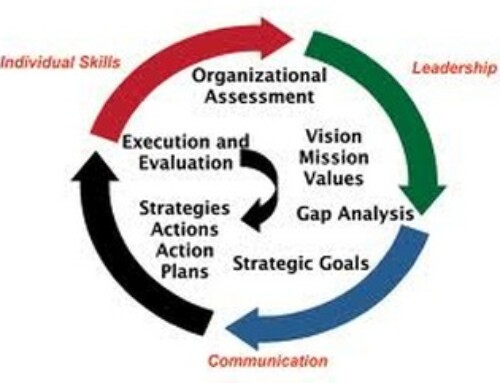 Having been to the parade of broker meetings in Las Vegas, there is one conclusion that stands about the strategic direction of real estate brokerages. Strategy is lagging the market shift for far too many brokerage owners. Oddly enough, the topic was not even discussed. I worked elbow to elbow with brokers through 2012 as we lived and rejoiced through a market rebound. Buyers returned to the market to buy homes with little support from the tight lending standards of mortgage banks. Prices rebounded enough to put sellers into the market. Broker’s profits rebounded and discretionary spending budgets emerged.
Having been to the parade of broker meetings in Las Vegas, there is one conclusion that stands about the strategic direction of real estate brokerages. Strategy is lagging the market shift for far too many brokerage owners. Oddly enough, the topic was not even discussed. I worked elbow to elbow with brokers through 2012 as we lived and rejoiced through a market rebound. Buyers returned to the market to buy homes with little support from the tight lending standards of mortgage banks. Prices rebounded enough to put sellers into the market. Broker’s profits rebounded and discretionary spending budgets emerged.
The Lag
First quarter spending analysis showed that brokers generally invested discretionary spending into the wrong side of the market. Many brokers invested in buyer lead generation programs when the obvious business need is to attract sellers. Brokers need listings, not buyers. There is no seller advertising in newspapers. No mention of it on broker websites. It is a prime example of what we consultants call strategic lag – a condition whereby a business reacts too slowly to new markets.
Smart Brokers
Smart brokers avoided the lag. They spent the winter building their spring plan. They evaluated their enterprise and addressed many of the neglected housekeeping chores that were sequestered from the housing crash. Old signs were replaced. Shabby offices were finally remodeled. New computers arrived. Marketing departments focused on rehabilitating company brands and listing presentations. Technology departments focused on customer relationship management solutions.
The long tail of customer for life
Dominate brokers remained dominate though the down market and the market return. In fact, they came out stronger with more market share because many of the small store brokers were not able to sustain the housing recession. Those dominate brokers maintained a core focus on staying in touch with past customers. They leaned into supporting those customers through strategic defaults and short sales. They helped them find housing though their property management businesses. They have helped customers save money through savings found in mortgage refinancing and insurance renewals. All along they stayed connected to the customer, advocating and supporting their housing needs, regardless of the circumstances. That customer attention generated more than just revenue. It created stronger bonds and relationships between the company, its agents, and its customers.
What’s next
Forget about buyer lead generation programs for the next 2 quarters. Focus all of your resources – sales training, seller marketing, seller advertising, and technology purchases around seller lead generation to keep your residential business cooking. Have agents leverage LPS Tax, REALIST Tax, or NAR’s RPR (REALTOR Property Resource) and look at off market listings. Find homeowners with neutral or positive equity and direct market to them. That is your next seller. Go talk to them.
Energize your mortgage company to comb through every loan of every customer that you have ever represented in a transaction. If they do not have an easy tool for this, try RealTag – it is $50 per month and you only need one license. The low interest rate environment is going to change. We are about ready to hit a wall whereby the price run up on housing, combined with new qualification standards for borrowers and lenders, is going to force another market shift. Focus your mortgage strategy on developing great people that your agents and customer love. Weed out any mortgage team member that is average or below average. Pay more for excellence if you need to.
Be diligent with your insurance lines. Make sure that you are extending your penetration during this market. Telemarketing, direct mail, and social media marketing are all key tactics to keep this business segment vibrant.
New Idea
If you use ProfitPower or LoneWolf, consider adding two fields to the customer record. One field is for Mortgage – Yes or No. The other is for Insurance Yes or No. Don’t just look at your mortgage and insurance penetration on transaction. Look beyond the transaction to measure your penetrations across your entire customer base. Success is not limited to the point of transaction, it extends to take-backs on lost sales and retention of refinance and renewals.
Print this out for your next managers meeting. It is sure to stimulate some great discussion.





Excellent. This industry is still gripped by the throat with fear and recovery. Great tips.